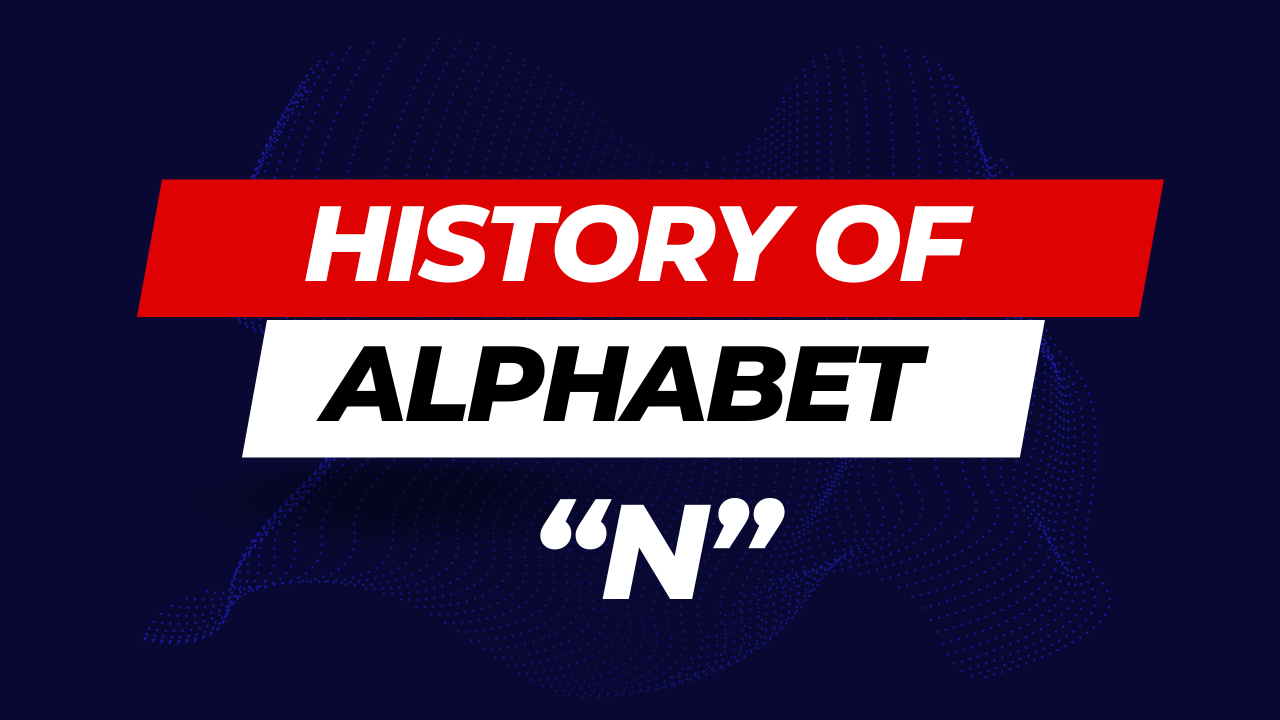History of Alphabet "N" has always fascinated linguists and historians alike. From its ancient roots to its modern-day usage, the letter "N" holds a significant place in the evolution of written language. In this detailed exploration, we will navigate through the rich tapestry of the History of Alphabet "N", shedding light on its diverse facets. Let's embark on this illuminating journey together.
Introduction: Unearthing the Letter "N":
The History of Alphabet "N" is a fascinating odyssey through time and cultures. As we delve into its origins and evolution, we unveil the profound impact this letter has had on written communication. From ancient scripts to contemporary fonts, "N" has transcended centuries, leaving an indelible mark on languages worldwide.
Exploring Ancient Nomenclatures:
In the annals of linguistic history, early civilizations carved symbols representing sounds. Ancient Scripts and the Emergence of "N" shed light on how the letter "N" found its way into various alphabets, from Phoenician inscriptions to Egyptian hieroglyphs. These early forms of "N" set the stage for its integration into evolving languages.
The Influence of Greek and Latin Languages:
The Greek and Latin civilizations played pivotal roles in shaping the modern alphabet. Greek "Nu" (Ν) and Latin "N" expound upon the transformation of the letter, showcasing its adaptability across linguistic boundaries. Through conquests and cultural exchanges, "N" became a cornerstone of both classical and medieval languages.
Medieval Manuscripts: Preserving "N" in Ink:
Medieval scribes meticulously preserved knowledge through handwritten manuscripts. Scriptoria and Monastic Scribes: Guardians of "N" illuminates the role of monastic scribes in copying ancient texts, ensuring the continuity of "N" in written records. These manuscripts became repositories of language, safeguarding the nuances of "N" for future generations.
The Printing Revolution: Mass Reproduction of "N":
With the advent of printing, letters could be replicated with unprecedented speed. Gutenberg's Press and the Dawn of Mass-Printed "N" explores how Johannes Gutenberg's invention revolutionized written communication. The mass production of books allowed "N" to proliferate, becoming ubiquitous in literature and scholarly works.
"N" in Diverse Cultures and Scripts:
Beyond the Latin alphabet, "N" found its place in diverse scripts worldwide. Devanagari, Cyrillic, and Beyond: "N" in Global Scripts" delves into how different cultures adapted and incorporated "N" into their writing systems. This cultural diffusion showcases the universality of "N" across languages and continents.
Modern Typography: Designing the Digital "N":
In the digital age, typography underwent a renaissance. Digital Fonts and Stylistic "N" explores the evolution of "N" in digital typography, from serif to sans-serif fonts. Graphic designers and typographers experimented with various styles, shaping the aesthetics of "N" in websites, advertisements, and digital media.
Frequently Asked Questions (FAQs):
What is the origin of the letter "N"? The letter "N" traces its roots back to ancient civilizations, including Phoenician and Egyptian scripts. It has evolved over centuries, becoming an integral part of numerous alphabets.
How did "N" spread to different cultures? "N" spread through cultural exchanges, conquests, and trade routes. As languages evolved, the letter "N" found its way into diverse scripts such as Devanagari, Cyrillic, and Arabic.
Is the pronunciation of "N" consistent across languages? While the written form remains constant, the pronunciation of "N" varies across languages. Different accents and phonetic nuances influence how "N" is spoken in diverse linguistic contexts.
Can "N" be a vowel in any language? In some languages, including English, "N" can act as a vowel, particularly in certain diphthongs and syllabic consonant formations.
Are there dialects or languages without the letter "N"? The letter "N" is prevalent in most languages globally. While specific dialects might have unique phonetic variations, "N" is a fundamental component of written communication.
How has digital technology influenced the appearance of "N"? Digital typography has allowed for diverse stylistic expressions of "N". From classic serifs to modern sans-serifs, designers have experimented with the visual representation of "N" in digital media.
Conclusion:
As we conclude our exploration of the History of Alphabet "N", it becomes evident that this unassuming letter has played a monumental role in the evolution of written language. From ancient civilizations to the digital age, "N" has persevered, adapting and thriving in diverse cultures and scripts. As we continue to navigate the ever-changing landscape of language, let's appreciate the enduring legacy of the letter "N".



.png)
.png)
0 Comments